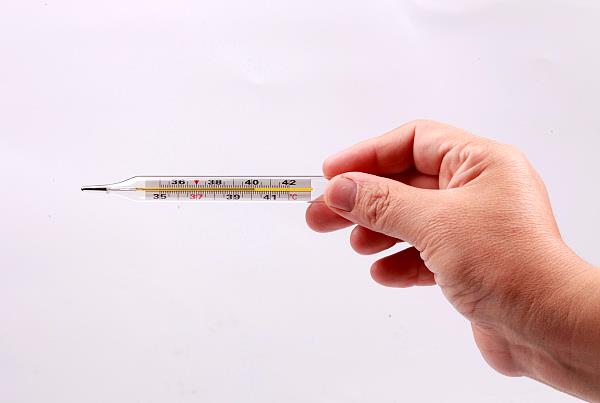How to deal with the high incidence of A flow? Is it too late to get vaccinated now?understandFly into the homes of ordinary people
Although everyone has been prepared to deal with the disease after the fever some time ago, there have been more and more people with fever recently. If you or your relatives and friends around you have fever, how should you deal with it? What can be prepared in advance to deal with it?
focus
Make sure you have a fever
Look for the cause while focusing on how your body feels and changes
Prepare medicines, but don’t use them blindly
take this opportunity to rest
01
Have a correct understanding of fever
Fever is a common symptom of many diseases. Most of the time, fever is caused by the body being infected by pathogens. Fever is like a body alarm. Once an enemy comes outside, fever is like a reminder from a sentinel, calling the “immune troops” of the whole body to prepare for battle.
Although fever is a bit uncomfortable, it is not necessarily a bad thing for the body.
On the one hand, fever itself seems to play a key role in fighting infection; on the other hand, it also reminds people that if it is a long-term, unexplained fever, the body needs to be systematically tested to deal with more serious causes.
Because fever is also seen in some non-infectious diseases-the enemy does not necessarily come from the outside, and there are often mutinies from the inside (such as tumor cells being discovered by the immune system), or even the sentry guard’s own problems (such as autoimmune diseases, and some noninfectious autoinflammatory diseases).
Of course, if it is the flu season, the fever is mostly related to the flu.
So here comes the question, we all know that fever may be sick, but how is it counted as fever?
02
touch forehead, mercury needle,
Electronic thermometer, who do you trust?
Fever means that the core temperature of the human body rises beyond the daily range, but there is a very unfamiliar word here. What is core temperature?
Core temperature refers to the internal temperature of the human body. Due to the different methods and tools of temperature measurement, not all temperatures can represent the core temperature. Of these, rectal and oral thermometers provide the most accurate measure of core body temperature.
Its accuracy is roughly as follows:
Rectal temperature (rectal temperature) > ear (tympanic membrane) > forehead (temporal artery) thermometer > oral cavity > armpit
So what counts as a fever?
Generally speaking, for adults, the core body temperature of the human body should be 37-37.5°C under normal conditions. Different measurement methods, normal values are axillary temperature (36.0-37.0°C), oral temperature (36.3-37.2°C), rectal temperature (36.5-37.5°C)
Of course, although we all know that rectal temperature is the most accurate, it is very troublesome to measure body temperature after taking off our pants. We usually use forehead temperature, ear temperature, armpit temperature and oral temperature when we operate. Taking the most simple forehead temperature as an example, it generally exceeds 37 ℃, and accompanied by symptoms of discomfort, it is considered a fever.
Also, for children, according to the American Academy of Pediatrics, the criteria for children are:
Rectal and ear temperature at 38°C or above;
Oral temperature at or above 37.8°C;
The axillary temperature was 37.2°C or above.
03
find the cause,
But don’t be too obsessed with the cause
As mentioned above, there are many diseases that may cause fever. We usually only need to consider factors such as the current epidemic of infectious diseases such as influenza, but we don’t need to worry too much about other causes. Pay attention to the patient’s state and take proper care. Below are some fevers reason:
Immunization reactions are the most common cause of noninfectious fever in children 3-36 months of age.
Then there are infectious diseases, 55%-60% of febrile children presenting to primary care providers or emergency departments have clear bacterial or viral infections on physical examination, most of these children have acute pharyngeal tonsils inflammation. Up to 6% of fevers in young children are caused by a definite viral illness, eg, bronchiolitis, influenza, varicella.

Other noninfectious causes of fever are less common and include Kawasaki disease, drug fever, central nervous system dysfunction, malignancy (eg, leukemia), and chronic inflammatory disorders (eg, inflammatory bowel disease and juvenile idiopathic arthritis).
Fever caused by immunization can be ruled out relatively easily (usually occurs within 48 hours of vaccination), and no special treatment is required. If this cause is ruled out, we mainly consider infectious diseases. Among the infectious diseases, we also focus on the infectious diseases that are currently prevalent in society. For example, in the near future, we need to consider influenza A, Norovirus or new crown infection.
Finding the cause of the disease is helpful to judge the course of the disease and the treatment methods. Some diseases also have convenient methods. For example, the new crown can be tested for antigens at home. At present, there are also influenza detection reagents that can be operated by patients themselves. If you have diarrhea or vomiting In most cases, it is possible to consider Nuoru.
For some infectious fevers, the course of the disease is self-limiting. In other words, even if you don’t take medicine or deal with it at all, it will subside after a period of time after infection. What we need to guard against is the progression or deterioration of the disease, observe symptoms other than fever, pay attention to the physical condition, and identify danger signs in time.
04
Prepare medicine but don’t take medicine indiscriminately
There are no more than two kinds of medicines to deal with infectious fever: symptomatic medicine and cause medicine.
The so-called symptomatic drugs are drugs that improve symptoms, such as most non-steroidal anti-inflammatory drugs. Changed to a name we are familiar with, it is our commonly used acetaminophen or ibuprofen.
However, it should be noted that for adults and children, there are usually different dosage forms and contents, and it is necessary to read the label carefully to determine the appropriate dosage. For children, it is even more important to avoid repeated use of drugs with the same drug composition in different dosage forms, and to avoid giving aspirin to children or adolescents.
The principle of symptomatic drug administration to children is to look at the mental state. If the child is in a good state of mind, eating, drinking and playing are relatively normal, then even if the body temperature exceeds 38.5°C, you can continue to observe without medication; Parents give medicine to children.
This principle is also valid for adults.

The medication for the cause is more complicated. In some diseases, there are specific drugs that are more effective but not suitable for everyone (such as the new crown); for some diseases, clear and effective drugs need to be taken at a specific time (such as early infection, more than 48 hours); for some diseases, there is no clear and effective drug to treat the cause (such as Noro).
So back to the question just now, in infectious fever, in many cases, it is necessary to take a good rest and relax, and at the same time find the cause and deal with it.
05
take the opportunity to rest
record the following
Regardless of the above-mentioned infectious diseases, the body will be in a state of exhaustion and weakness after fever, and the disease is easily spread through frequent social activities. Therefore, no matter adults or children after fever, please give yourself a reason to relax and rest at home.
If possible, please record the following information in the course of illness, and bring the information to see a doctor when the condition changes or is necessary:
The course of fever: when the fever started, it can be counted in days, such as 2 days ago, or it can be counted in hours, such as 4 hours ago.
Possibility of fever: Briefly describe what you think is the most likely cause, such as “my colleagues in the company have had a lot of influenza A recently.”
Features of fever: What is the highest temperature of the body temperature, the heat peak rises every few hours, and when does the fever usually occur. It would be even better if it could be described with concise diagrams.
Factors that relieve fever: For example, after taking antipyretic drugs, the fever will gradually decrease within 1 hour, or the fever can be reduced by itself without medication.
Symptoms associated with fever: cough, runny nose, vomiting, diarrhea, abdominal pain, ear pain, sore throat, headache, etc.
If you have seen a doctor in other medical institutions before, you should inform in detail how, when and where you saw a doctor, what tests you did, what you considered for diagnosis, and what medications the doctor gave you. If you have not seen a doctor before, but you have taken medicine, you also need to tell the doctor.
In addition, some basic information can also be recorded, such as: mental state (especially after the fever has subsided), diet, sleep, urination and defecation, etc.
06
about the flu
say a few more words
At present, influenza A is prevalent, and many people have started to have a fever. Many classes have been suspended because of this, and sales of oseltamivir have increased significantly in some areas… In order to avoid this situation from happening again, the best way is always to get a flu vaccine.
Influenza has a clear high-incidence season, which generally lasts from October to March of the next year. Therefore, it is strongly recommended that everyone make an appointment for influenza vaccination in time from September to October every year.
In addition, because the flu virus often mutates, and the effect of the vaccine will be weakened, it should be vaccinated every year when the season comes. It should be noted that after receiving the flu vaccine, our immune system still needs 2-4 weeks to produce sufficient protective antibodies to resist infection. Therefore, it is recommended that you get vaccinated in time when the season comes, the sooner the better.
There may be some friends, the biggest question they face is: Is it still too late to get the influenza A vaccine? I have to say here that although it is a bit late, if you have not been infected with influenza A and can make an appointment for the vaccine, you might as well get a shot first, after all, there is still a “tail” left in this round of influenza A.
Editor: Yoon Sang Seung Nam
![]()
